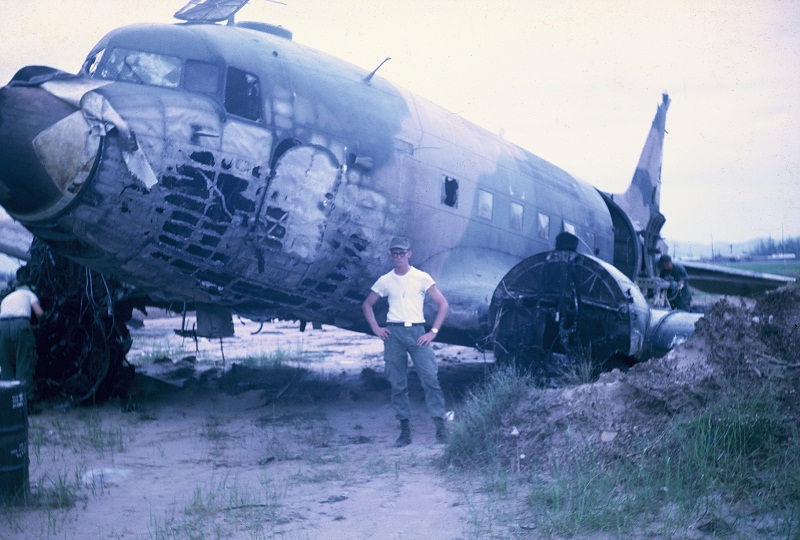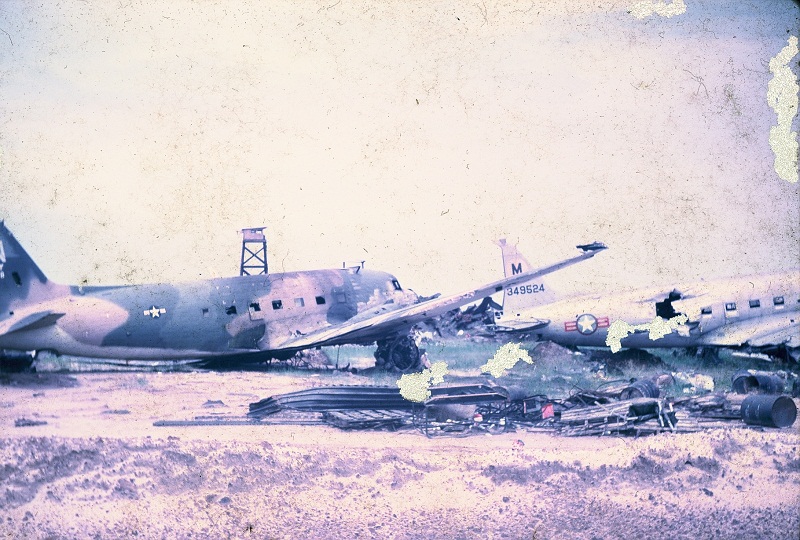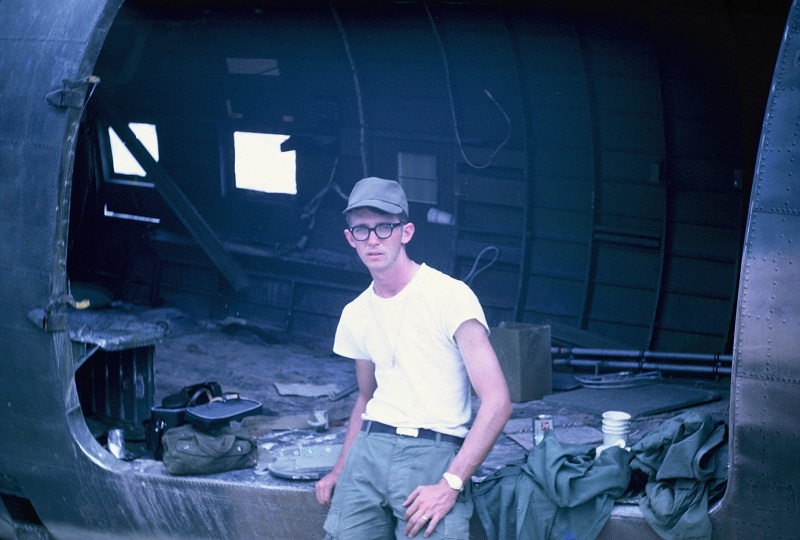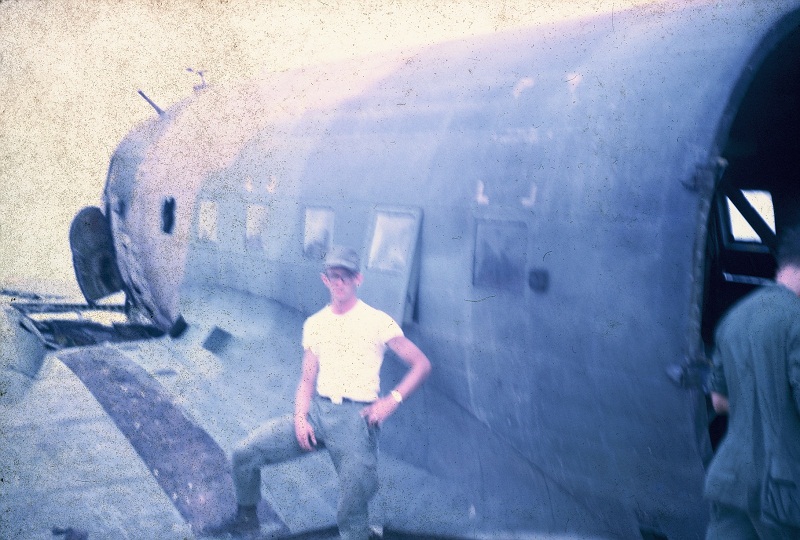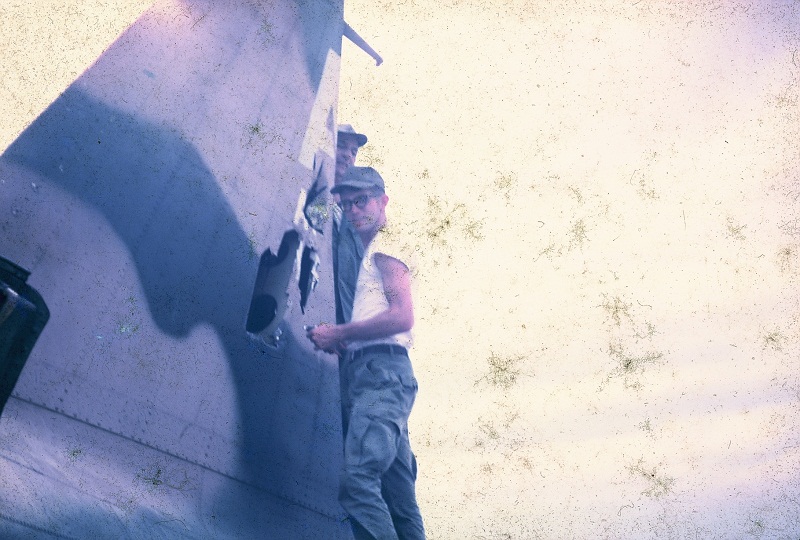EC-47 43-48959 Crashes September 30, 1969Update: 24 October, 2011 Photos at the bottom of this page. The following based on USAF Accident/Incident Report dated September 30, 1969.
Aircraft Crewmembers1st Lt. Howard W. Hamilton - Pilot Major Ronald V. Villafranco - Navigator TSgt Thomas J. Berridge - Flight Engineer SSgt Curtis G. Simonson - Radio Operater (see note below) Sgt Billy C. Robbins - Radio Operater Sgt Wayne D. Rostad - Radio Operater Sgt Robert B. Batson - Radio Operator
History of FlightCap 54 (Aircraft 43-48959) was scheduled for a classified combat mission originating from Pleiku Air Base, Republic of Vietnam on 30 September 1969. The proposed departure time was 0930 hours local time. The estimated flying time was 7 PLUS 00 hours, with an operations stop planned for Hue/Phu Bai Air Base, Republic of Vietnam. The aircraft had a full fuel load, gross weight 27,400 pounds, at Pleiku for engine start. The crew arrived at operations for their briefing at 0800 hours. The intelligence, operations, and weather briefings were completed. This was to be Lieutenant Hamilton's first flight preparing him for aircraft commander check-out. He was briefed by the instructor pilot (LT. Col. Vizzini) to fly the entire mission from the left seat and act as the aircraft commander. The take-off from Pleiku AB, RVN was made at 0938 hours local (Eight minute delay for IFR clearance)> Lt Hamilton made the take-off and flew the aircraft to the working area. The weather slowly forced then out of their area. At approximately 1300 hours the instructor pilot decided to leave the assigned area due to weather. He checked the weather at Hue/Phu Bai AB and it was suitable for the scheduled operations stop (Weather 2000 scattered, wind 310/12). Lt Hamilton made the crosswind landing, runway 27, at Phu Bai with no problems noted. The landing time was 1428 hours. The crew performed the after landing checklist, then proceeded to the parking area where engines were shut down using the appropriate checklist. The flight crew stated that this leg of their mission was routine and the operation of the aircraft was excellent. There were no maintenance deficiencies entered in the AFTO form 781A. Lt. Col. Vizzini directed the flight engineer to fill the main tanks with fuel. Auxiliary tanks contained approximately 120 gallons per tank and were not refueled. This provided the aircraft with 640 gallons of fuel as prescribed by the instructor pilot. With this fuel load the take-off gross weight was 26,300 pounds (Well within the limits of operations at Hue/Phu Bai AB). A fuel truck met the parked aircraft, and the crew remained at the airplane during the refueling operations. After refueling, the flight engineer drained the sumps and completed a walk around preflight. Lt. Hamilton computed the take-off performance during this time. At approximately 1445 hours the engines were started and they then taxied to the runup area for runway 27, Lt. Hamilton occupying the left seat. All procedures were in accordance with the dash one and current directives. The engine runup and the before take-off checklists were completed in the runup position for runway 27. All systems were checked normal. The instructor pilot called the tower for clearance to take the active and he did not understand the tower's reply. He asked the Vietnamese controller to repeat and the second time he understood: "CAP 54 take the active and hold". The pilot taxied into the number one position and held as cleared. The line up check was accomplished on the active. A UH-1 helicopter (Black Cat 27) was cleared to parallel runway 27 and land on landing pad Delta, (Time 1507:15). The tower cleared CAP 54 for take-off (Time 1507:30). Lt. Hamilton advanced the throttles to 30 inches manifold pressure and then released his brakes. CAP 54 started the take-off roll. The winds were reported 360/10 knots, a 10 knot 90 degree crosswind from the right. Aircraft control, and acceleration were normal at the 60 knot check, the pilot noted the helicopter ahead and to the right, and his aircraft started to turn to the right. He corrected to the left and the instructor pilot stated ofer interphone that he (the pilot) was doing fine. After Lt. Hamilton's initial correction to the left the aircraft turned sharply to the left with the left wing down. At this poin the instructor pilot took control of the aircraft. It is at the position where the EC-47 would be approximately parallel with the Black Cat 27. Lt. Col. Vizzini leveled the wings and brought the aircraft parallel to the runway. From approximately the 1800 foot point, the aircraft was off the 72 foot (AM-2) wide runway and near the edge of the 30 foot asphalt shoulder that adjoins and parallels the runway. Neither pilot realized that the left wing had struck the 2000 foot marker damaging the wing and aileron control surface. The other crew members were also unaware that the left wing had struck anything. Immediately after leveling the wings an paralleling the runway, the instructor pilot initiated the take-off. The aircraft became airborne at the computed take-off distance. Neither the instructor pilot or pilot remembered airspeed at lift off. After lift off the instructor pilot called for the gear up. At the same time that the pilot initiated gear retraction, the aircraft went into a steep bank to the right (** about 3/4 of a line blanked out here **) In attempting to raise the right wing Lt. Col. Vizzini had extreme difficulty moving the aileron controls and was aided by the pilot. Through out the take- off the pilots had used right aileron (right wing down) to compenssate for the 10 knot crosswind which is the recommended procedure. With extreme force the instructor pilot brought the right wing up to near level but not before the wing struck the ground. The aircraft then fell off on the left wing and after pivoting on the left wing tip came to a stop near taxiway number two, left of the runway pointing in a southerly direction. The fuel from the ruptured right fuel tank ignited as the aircraft came to a stop. The instructor pilot pulled the mixture controls to cut-off and called for an immediate evacuation of the airplane. One of the radio operators (as briefed) opened the main cargo door and all crew members evacuated the aircraft in a minimum of time. The navigator had a slight contusion on the thigh and one radio operator had a superficial laceration. Lt. Col. Vizzini collected all classified material and arranged for guards for the aircraft. The crew was then transported to the hospital for physical examinations.
The Mission Supervisor/Senior Radio Operator listed as Curtis G. Simon should read Curtis G. Simonson. More coming on this incident from Curt Simonson.
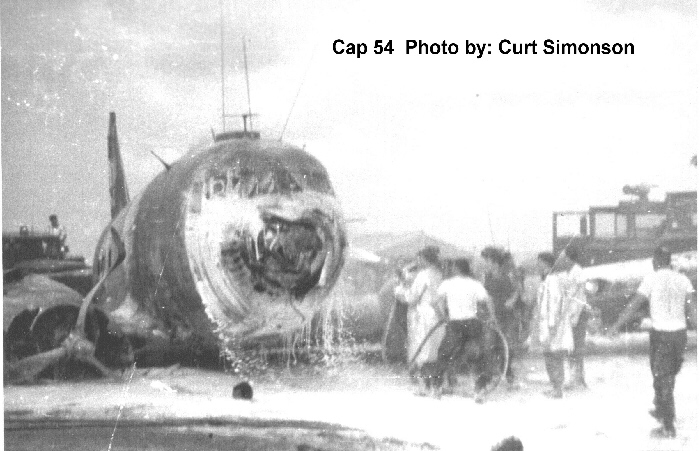 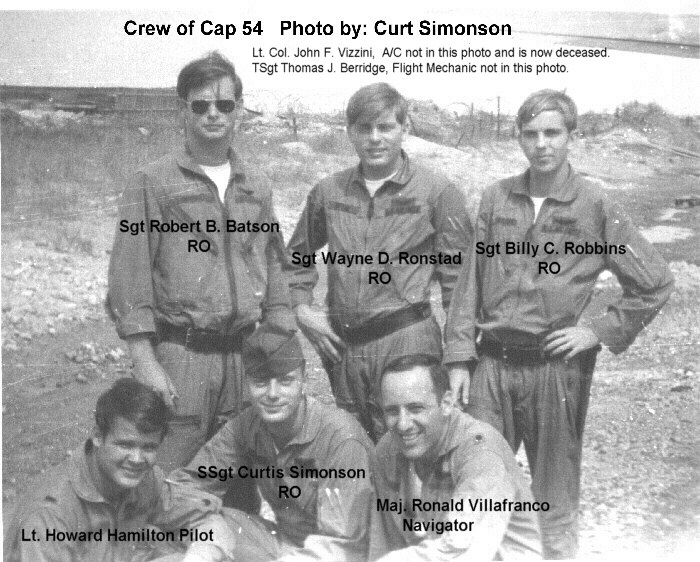 Thanks to Curt Simonson for the Photos above of Cap-54 and Crew.
Click Here to Link to Official Report Text in PDF Format, THANKS to Joe Martin. |

